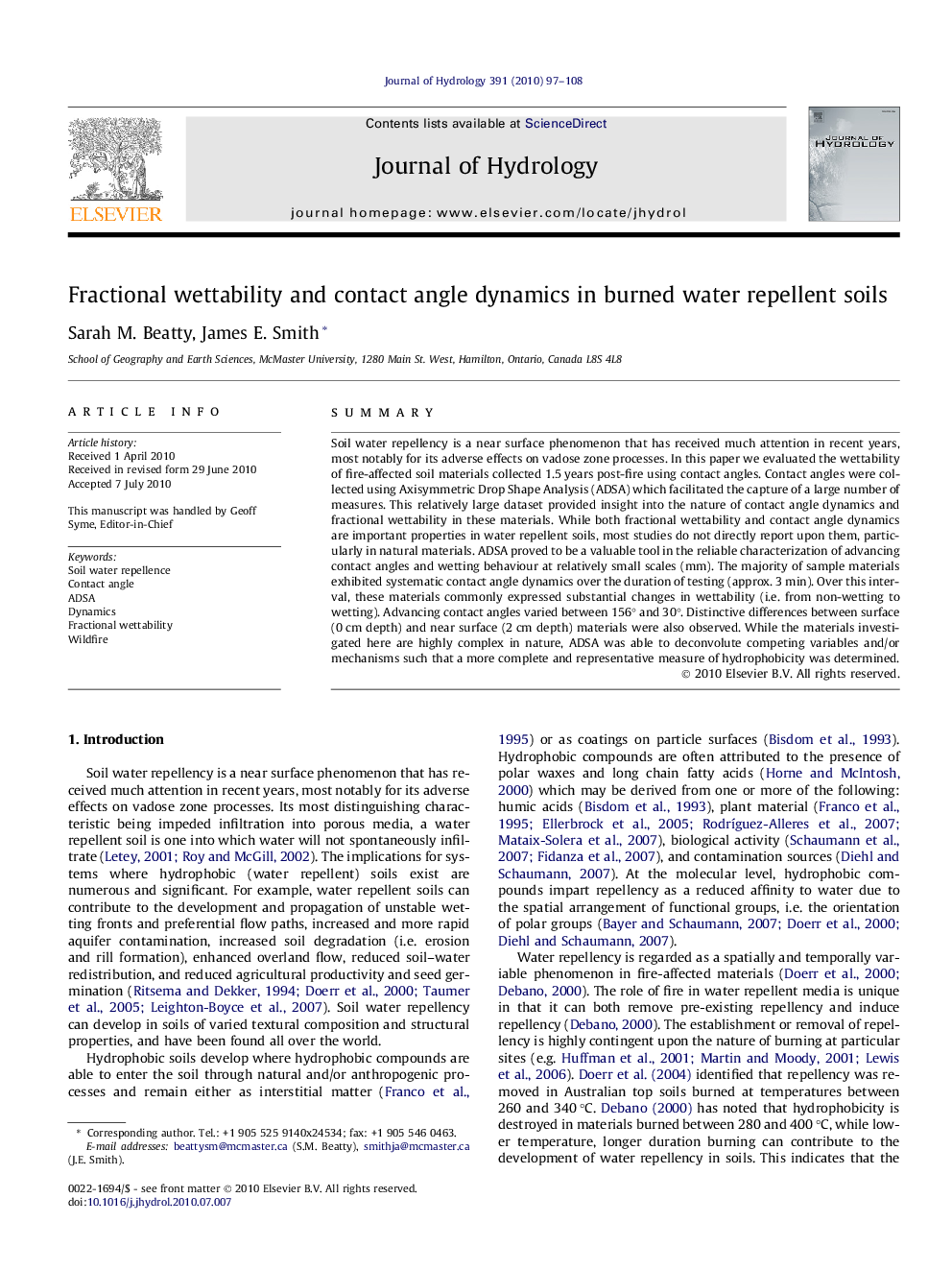| Article ID | Journal | Published Year | Pages | File Type |
|---|---|---|---|---|
| 4578104 | Journal of Hydrology | 2010 | 12 Pages |
SummarySoil water repellency is a near surface phenomenon that has received much attention in recent years, most notably for its adverse effects on vadose zone processes. In this paper we evaluated the wettability of fire-affected soil materials collected 1.5 years post-fire using contact angles. Contact angles were collected using Axisymmetric Drop Shape Analysis (ADSA) which facilitated the capture of a large number of measures. This relatively large dataset provided insight into the nature of contact angle dynamics and fractional wettability in these materials. While both fractional wettability and contact angle dynamics are important properties in water repellent soils, most studies do not directly report upon them, particularly in natural materials. ADSA proved to be a valuable tool in the reliable characterization of advancing contact angles and wetting behaviour at relatively small scales (mm). The majority of sample materials exhibited systematic contact angle dynamics over the duration of testing (approx. 3 min). Over this interval, these materials commonly expressed substantial changes in wettability (i.e. from non-wetting to wetting). Advancing contact angles varied between 156° and 30°. Distinctive differences between surface (0 cm depth) and near surface (2 cm depth) materials were also observed. While the materials investigated here are highly complex in nature, ADSA was able to deconvolute competing variables and/or mechanisms such that a more complete and representative measure of hydrophobicity was determined.
